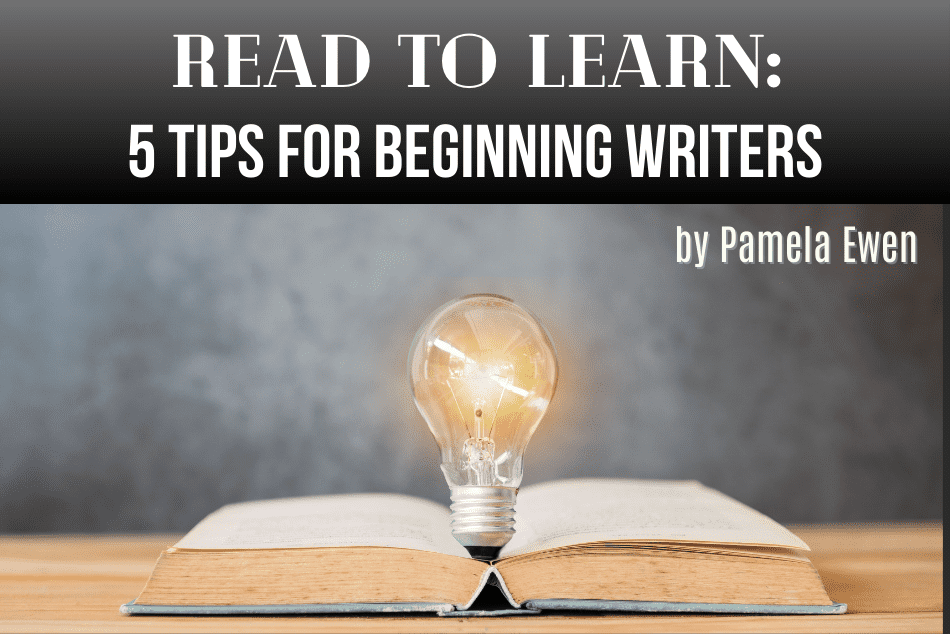How does a beginning writer get better? One word—read. I believe that to write a good book, you must first read, read, read. So sit back in your favorite chair, break out a masterpiece, and read—and in doing so you will be learning to write! Read the best, the great writers, the classics, and the best of the new. Read to learn how those writers handle the complexities of plot and character, and how they create and limit the worlds the characters live in. How they construct sentences, how they utilize ‘voice’. And how, sometimes they break the rules.
Here are some examples:
TIP #1 — Read for Point of View
Most writers choose a point of view by which they tell a story and stick to it. But in War and Peace (1867), Tolstoy worked a bit of magic with a small surprise, likely only a writer would notice. In a simple hunting scene in his long book, War and Peace, a man stands with his dog at the edge of a forest, prepared for hunting. The dog stands still beside him while the hunter gives instructions. In this scene, Tolstoy surprised readers by switching ‘point of view’ for just one instant, moving perspective from the thoughts of the hunter to the dog’s thoughts as he receives directions from his master. By interjecting dog-thoughts into that scene, Tolstoy not only expands our reading of the problem at hand in the scene, but he also lightens things up a bit by going against the norm.
Against the rules, but brilliant.
TIP #2 —Read for Wit, Politics, and Social Norms
Read Anthony Trollop for his droll wit, in my opinion, best shown in Barchester Towers (1859). Trollop, an English novelist, drills through the politics and social norms of those times, down to the seeds of psychological motivations in ways still relevant today. Mark the paragraphs which catch your attention—he makes strong points on serious issues in a light, amusing way. Although much historical fiction is based upon facts—real people, places, events—Trollop’s characters and settings are imaginary, leaving him free to manipulate the structure of his story, and the freedom to criticize without offense to friends, family, or society.
TIP #3 — Read for Literary Devices
E.M. Forster was a master of literary devices. In A Passage to India (1924), he utilizes symbolism and motifs—objects as symbols recurring throughout the story. Forster takes on, among other ideas, the differences between various societies and the importance of harmony and understanding between them. In A Passage to India, pay particular attention to the green bird, the wasp, and the cave, and what each one represents as it appears in the story initially, and over again. Use these ideas, but you are not limited to such high-flying thoughts and issues when using literary devices. They are also useful for such things as establishing your character’s feelings and personalities in your own stories—a man who always carries a pipe, for example.
TIP #4 — Read for Dialogue
In my opinion the best examples of almost perfect dialogue come from the writings of F. Scott Fitzgerald. His written words are true to the jazz age—light, quick, penetrating, and often funny, but underneath we also feel the sting of longing and ambition. My favorite of his books is The Beautiful and Damned (1922). As with Forster, Fitzgerald is also an expert at creating iconic symbols in his scenes which hold much more meaning than the thing itself. For example, in The Great Gatsby (1925), the light across the water on Daisy’s dock remains the same each night, but to Gatsby, it takes on deeper meaning as the story progresses.
TIP #5 — Read to Learn About Voice
Alfred A. Knopf published Memoirs of a Geisha (1997), by Author Golden. This was Golden’s first published book. He had studied and worked in Japan for years, and felt he knew the subject of Geishas well enough to write the story. He wrote in third person. After years of work, his first draft of 800 pages was finished, and he began to revise. But just then, he was given the opportunity to fly back to Japan to interview a real Geisha of the secret subculture. He interviewed her at length, writing afterward that his research “…took my understanding of a Geisha’s daily existence and stood it on its head.”
With that, he threw out the first draft and started over. The second draft was 750 pages, again written in the third person. In the end, he felt that the third-person voice was too dry, too remote. The voice was his, not the Geisha’s, merely a narrator. This manuscript, too, was tossed. But the extensive research, delving first-hand into an obscure and generally misunderstood Japanese culture was invaluable, helping him understand from the perspective of a woman, a Japanese Geisha, the numerous emotional, psychological, and historic complexities the story must cover.
By now six years had passed, and Golden began writing again for a third time—but ‘voice’ this time was in first person. It was comfortable and worked. At last, he felt he understood the true Geisha culture and its’ feminine perspective. The result was brilliant. The book was published by Knopf and sold over three million copies around the globe. Memoirs of a Geisha was also made into a wonderful movie.
Golden is an excellent writer. It seems to me from reading the story of this book that a major key to his success was unrelenting research in a quest to find authenticity that allowed him to discover his voice as a storyteller.
*****
I began writing not long after Memoirs of a Geisha was written, and I recall Author Golden saying in an interview that his advice to new writers was to read the ‘one hundred best books in the world.’ I took that advice to heart—never got through all of them, but well-written books are always good teachers. So, read—to learn to write. Use a pen and underline when you find interesting words or ideas, or unique ways the author uses words and phrases in sentences, even when you are just reading for pleasure. You will find that learning to write while you read, for some reason, also enhances the pleasure of a good book.
Good luck and happy reading!
Let us here about your favorite read and how it impacted your writing on our Facebook page.
 Pamela Binnings Ewen is the author of one nonfiction book, Faith on Trial, and seven novels, including The Moon in the Mango Tree, awarded the 2012 Eudora Welty Memorial Award, and The Queen of Paris, which has sold over sixty-five thousand copies. After practicing law for many
Pamela Binnings Ewen is the author of one nonfiction book, Faith on Trial, and seven novels, including The Moon in the Mango Tree, awarded the 2012 Eudora Welty Memorial Award, and The Queen of Paris, which has sold over sixty-five thousand copies. After practicing law for many  years, she retired to write. She is a founder of the Northshore Literary Society in St. Tammany Parish, Louisiana, in the greater New Orleans area. She’s also served on the boards of the Pirate’s Alley Faulkner Society and Tennessee Williams Festival. Her latest novel, EMILIENNE, was published by Blackstone and is available in all formats.
years, she retired to write. She is a founder of the Northshore Literary Society in St. Tammany Parish, Louisiana, in the greater New Orleans area. She’s also served on the boards of the Pirate’s Alley Faulkner Society and Tennessee Williams Festival. Her latest novel, EMILIENNE, was published by Blackstone and is available in all formats.
Website: https://www.pamelaewen.com/
Facebook: https://www.facebook.com/pamelabinningsewen/
Twitter: @pamelabewen
Instagram: @pamelabewen





